Search Images
Browse Content (p. 1262)
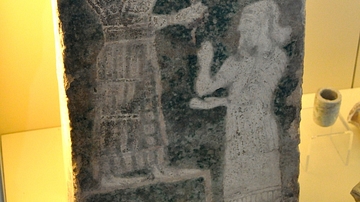
Image
Worship Scene from Assur
This is a glazed ceramic tile. A man stands and prays before Shamash, the Sun God. Symbols of Mesopotamian deities appear on the upper part. Neo-Assyrian Period, 8th century BCE. From Assur (Ashur; modern-day Qal'at Sherqat). (Pergamon Museum...
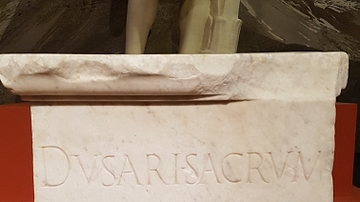
Image
Marble Altar Sacred to Dushares Puteoli
Marble altar sacred to Dushares Puteoli. 1st century CE. Museo dei Campo Flegrei, (National Maritime Museum, Sydney Australia). A beautiful piece of Italian Carrrara marble fashioned into an altar to Dushares, a god of the Nabateans from...
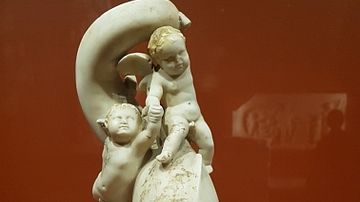
Image
A Fountain Head from Pompeii
A fountain head in the shape of a cupid riding a dolphin. The water spouted from the mouth of the dolphin. From a private garden in Pompeii. 1st century CE. Soprintendenza Archeologica di Pompei, (National Maritime Museum, Sydney Australia...
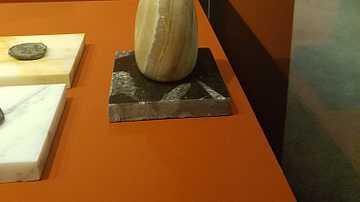
Image
Ointment Jar From Pompeii
Alabaster ointment jar from Pompeii. 1st century CE. Soprintendenza Archeologica di Pompei, (National Martime Museum, Sydney Australia).
Alabaster was used frequently for ointment vessels as the stone preserved the contents.
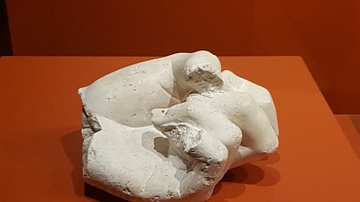
Image
Hand from A Roman Sculptor's Model
A hand from a sculptor's model. Found in Baiae (Italy). 1st century CE. Museo dei Campo Flegrei, (National Maritime Museum, Sydney Australia). Marble copies of Greek masterpieces were in high demand to decorate villas, gardens and public...
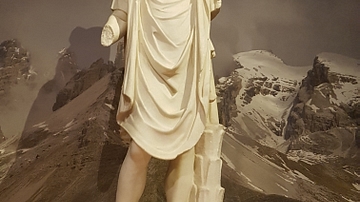
Image
Statue Of Hermanubis
This marble statue depicts Hermanubis, a combination of the Greek god Hermes and the Egyptian god Anubis - both guides to the souls of the dead. Found in Baiae (Italy). 1st century CE. Museo dei Campo Flegrei, (National Maritime Museum, Sydney...

Image
Olive Oil Amphora From Africa
Olive oil amphora from Africa and found at Ostia. 3rd century CE. Museo delle Navi Romane di Fiumicino. (National Maritime Museum, Sydney Australia) This amphora is stamped with its place of manufacture; Sullechtum in the Roman province...
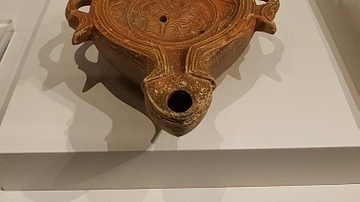
Image
Lamp with Crescent Moon Handle, Pompeii
A ceramic lamp which features an image of the Egyptian god Zeus-Ammon above an eagle on the handle. Pompeii, 1st century CE. Soprintendenza Archeologica di Pompei, (National Maritime Museum, Sydney Australia).

Image
Running Leopard of Erebuni
Secular and religious mural painting occupied a unique place in the Urartian culture. The palace and temple of Erebuni Citadel were richly decorated with multicolored and beautiful frescoes, covering around 2,000 square meters in surface...
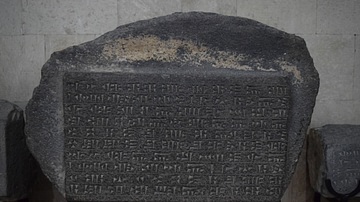
Image
Cuneiform Inscription of Arguishti
The famed "Cuneiform of Arguishti," which celebrates his construction of the fortress of Erebuni in 782 BCE and his martial exploits in nearby regions. (Erebuni Historical and Archaeological Preserve, Yerevan, Armenia.)